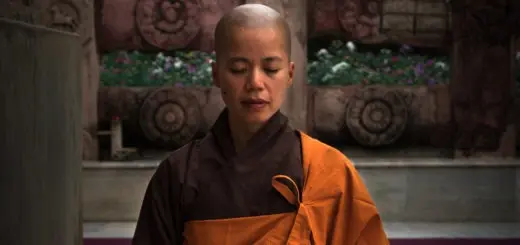The Crook and Flail: Symbols of Pharaoh’s Rule

Looking for more amazing products? Check out our online store and explore our collection here! Happy shopping!
Before diving in, please note: This post is for informational purposes only. If you’d like to know more about how we approach topics, feel free to check out our friendly Disclaimer Page.
Hey there, amazing readers! 
We’re committed to delivering quality posts, and your support (even just sticking around despite the ads) means everything to us. So, bear with us, and thanks for helping us keep the good vibes rolling. Now, on to the fun stuff!
TRANSLATE BUTTON AT THE END OF THE ARTICLE
The Crook and Flail: Symbols of Pharaoh’s Rule
Overview
The crook and flail are two iconic symbols that were deeply intertwined with the rule of Pharaohs in ancient Egypt.
These symbols represented the authority and power of the Pharaoh, who was seen as both a divine ruler and a shepherd to his people.
The crook, or heka, symbolized Pharaoh’s authority and his role as a just and wise leader, while the flail, or nekhakha, represented his power and ability to maintain order and punish those who posed a threat to his kingdom.
This article delves into the origins, significance, symbolic meaning, and ritualistic use of the crook and flail, as well as their depiction in Pharaonic art and hieroglyphs.
We will also explore the legacy and influence of these symbols in modern times.
Ancient Egyptian Symbolism: The Crook and Flail
Ancient Egyptian symbolism played a crucial role in expressing the beliefs and ideals of the civilization.
The crook and flail were prominent symbols that embodied the divine authority and power of the Pharaoh.
These symbols were often depicted in the hands of Pharaohs, emphasizing their role as the ultimate rulers of Egypt.
The crook symbolized the Pharaoh’s authority to lead and guide his people, while the flail represented his ability to maintain order and protect his kingdom from any potential threats.
Origins and Significance of the Crook and Flail
The origin of the crook and flail can be traced back to the early dynastic period of ancient Egypt, around 3100 BCE.
The crook, in particular, has been associated with the pastoral lifestyle of the early Egyptians, where the Pharaoh was seen as the divine shepherd of his people.
As society became more complex, so did the symbolism associated with these objects.
The crook and flail came to represent not only the Pharaoh’s authority and power but also his responsibility to ensure the well-being and prosperity of his subjects.
The Symbolic Meaning of the Crook and Flail
The crook and flail held deep symbolic meanings in ancient Egyptian culture.
The crook, with its curved shape resembling a shepherd’s staff, symbolized the Pharaoh’s role as a shepherd to his people.
It represented his duty to guide and protect his subjects, just as a shepherd would care for his flock.
The flail, on the other hand, was a symbol of the Pharaoh’s power and ability to maintain order.
Its shape, resembling a whip, represented the Pharaoh’s ability to punish those who threatened the stability and harmony of his kingdom.
Pharaoh’s Role: A Divine Shepherd
In ancient Egyptian belief, the Pharaoh was considered a divine ruler, chosen by the gods to lead and protect the people.
The crook, as a symbol of the Pharaoh’s authority, highlighted his role as a shepherd in guiding his subjects to a prosperous and harmonious life.
The Pharaoh was expected to act with wisdom, justice, and compassion, just as a shepherd would care for his flock.
This concept of the Pharaoh as a divine shepherd was deeply ingrained in the religious and political ideology of ancient Egypt.
The Crook: Symbolizing Pharaoh’s Authority
The crook, also known as the heka, was a highly recognizable symbol of the Pharaoh’s authority.
It was typically made of wood or metal and adorned with precious materials such as gold and gems.
The curved shape of the crook symbolized the Pharaoh’s ability to navigate and lead his people through the challenges they faced.
It also served as a visual representation of the Pharaoh’s wisdom and just rule.
The crook was an essential attribute of the Pharaoh’s regalia, and its presence in depictions of Pharaohs emphasized their legitimacy as rulers.
The Flail: Representing Pharaoh’s Power
The flail, or nekhakha, was another significant symbol associated with the Pharaoh’s rule.
It was a long-handled whip with multiple strands, often made of precious metals.
Explore the Path to Spirituality and Enlightenment – Start Here.
The flail was a representation of the Pharaoh’s power and ability to enforce order and discipline in his kingdom.
Just as a flail was used to separate grain from its husks, the Pharaoh’s flail symbolized his ability to separate the righteous from the unjust and to punish those who posed a threat to his authority.
The flail was also considered a symbol of fertility and abundance, further emphasizing the Pharaoh’s role as a provider for his people.
The Crook and Flail in Pharaonic Art
Pharaonic art is filled with depictions of Pharaohs holding the crook and flail, showcasing the importance of these symbols in ancient Egyptian society.
Sculptures, reliefs, and paintings often portrayed the Pharaohs holding the crook and flail in their hands, emphasizing their role as divine rulers.
These artistic representations further solidified the Pharaoh’s authority and power in the eyes of the people.
The crook and flail were also frequently depicted in temple reliefs and tomb murals, serving as a reminder of the Pharaoh’s responsibility to lead and protect his kingdom.
Symbolic Depictions: The Crook and Flail in Hieroglyphs
Hieroglyphs, the ancient Egyptian writing system, also incorporated the crook and flail as symbols of the Pharaoh’s rule.
These symbols were often used alongside the Pharaoh’s name or titles to signify his divine authority.
The crook, represented by a curved staff, was read as "heka," meaning "authority" or "rulership." The flail, depicted as a whip with multiple strands, was read as "nekhakha," symbolizing "power" or "dominance." These hieroglyphic representations further reinforced the significance of the crook and flail in ancient Egyptian culture.
Ritualistic Use of the Crook and Flail
The crook and flail were not merely symbols of authority and power; they also played a role in religious rituals and ceremonies.
During coronation ceremonies, the Pharaoh would receive the crook and flail as sacred objects, symbolizing his divine right to rule.
The Pharaoh would hold the crook and flail while performing various rituals and offerings to the gods, signifying his role as a mediator between the divine and mortal realms.
The crook and flail were believed to have a protective and magical influence, safeguarding the Pharaoh and his kingdom.
Legacy and Influence: The Crook and Flail Today
Although ancient Egypt has long vanished, the legacy and influence of the crook and flail can still be seen in modern times.
These symbols have inspired artistic representations and designs, particularly in jewelry, as a nod to the rich history and cultural heritage of Egypt.
The crook and flail have become iconic representations of leadership, power, and authority, often used in various contexts to symbolize these qualities.
Additionally, the symbolism associated with the crook and flail has influenced the depiction of leadership in popular culture, further perpetuating their significance in contemporary society.
Conclusion
The crook and flail were powerful symbols deeply woven into the fabric of ancient Egyptian society.
These symbols represented the Pharaoh’s authority, power, and role as a divine shepherd to his people.
The crook symbolized the Pharaoh’s authority and wisdom, while the flail represented his ability to maintain order and punish those who posed a threat to his kingdom.
These symbols were depicted in Pharaonic art, hieroglyphs, and played a significant role in religious rituals.
The legacy of the crook and flail can still be seen today, serving as a reminder of the enduring influence of ancient Egypt’s iconic symbols.

The Enlightenment Journey is a remarkable collection of writings authored by a distinguished group of experts in the fields of spirituality, new age, and esoteric knowledge.
This anthology features a diverse assembly of well-experienced authors who bring their profound insights and credible perspectives to the forefront.
Each contributor possesses a wealth of knowledge and wisdom, making them authorities in their respective domains.
Together, they offer readers a transformative journey into the realms of spiritual growth, self-discovery, and esoteric enlightenment.
The Enlightenment Journey is a testament to the collective expertise of these luminaries, providing readers with a rich tapestry of ideas and information to illuminate their spiritual path.
Our Diverse Expertise
While our primary focus is on spirituality and esotericism, we are equally passionate about exploring a wide range of other topics and niches 

To ensure we provide the most accurate and valuable insights, we collaborate with trusted experts in their respective domains 
Our blog originally focused on spirituality and metaphysics, but we’ve since expanded to cover a wide range of niches. Don’t worry—we continue to publish a lot of articles on spirituality! Frequently visit our blog to explore our diverse content and stay tuned for more insightful reads.
Hey there, amazing reader! 
Check out our store here and take a peek at some of our featured products below! Thanks for being awesome!
















